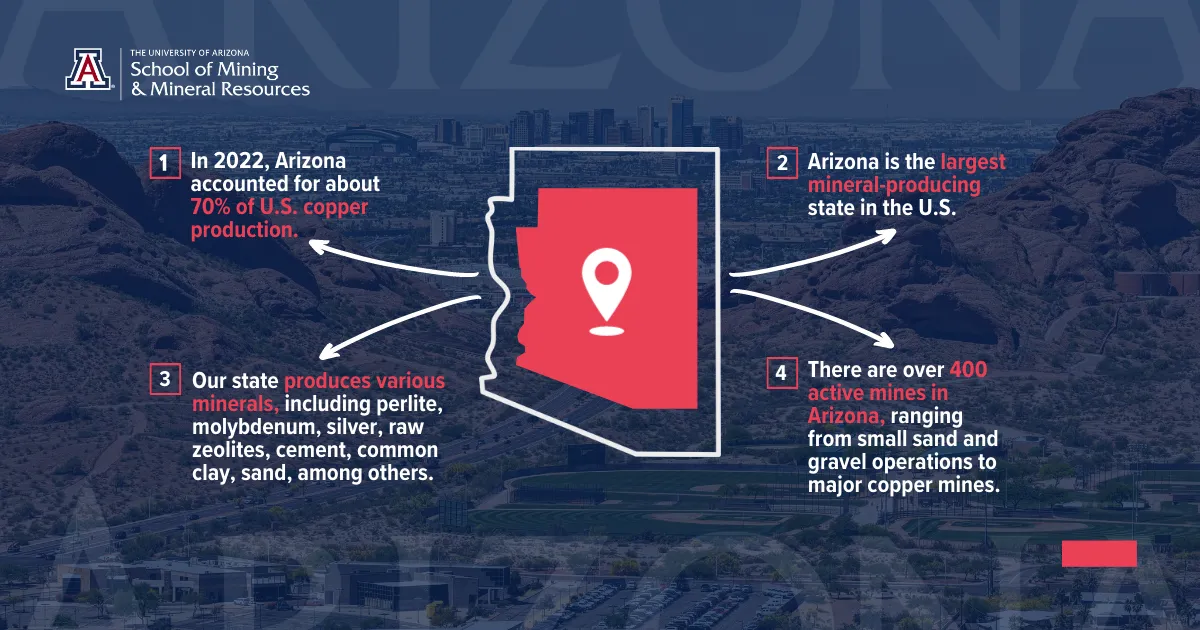
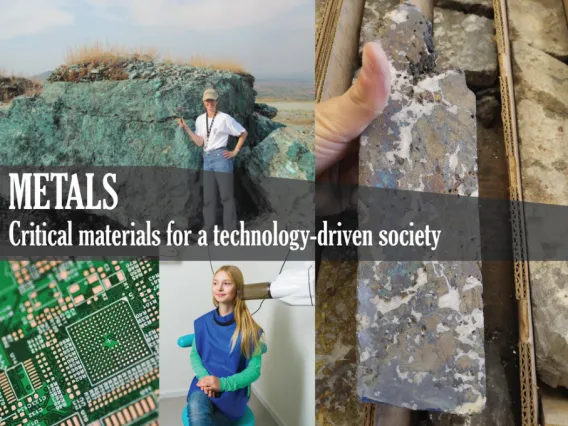
Metals: Copper, molybdenum, rhenium, gold, silver
Clockwise from left: geologist at outcrop of copper oxide ore, drill core of copper sulphide ore, lead jacket, circuit board
Arizona is home to valuable deposits of several important metals, but copper often takes center stage. Arizona has nine active copper mines, which together account for 68% of the country’s copper output. Anything with an on/off switch uses copper. Arizona copper mines also produce the economically important trace metals rhenium and molybdenum, which are primarily used in steel and other alloys.
Arizona has one active gold mine (Moss Mine, Mohave County) and other deposits of silver, gold, lead and zinc are also in the process of being developed into mines. These minerals are also currently produced as byproducts of copper mining.
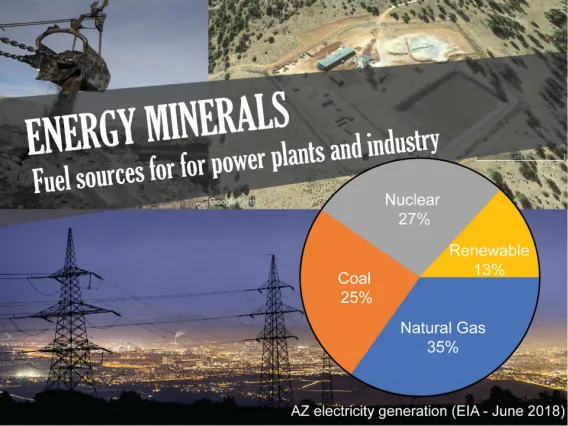
Energy minerals: uranium
Clockwise from top left: Kayenta coal mine (Mark Henle/The Republic), Canyon uranium mine site, electrified city
Energy minerals are primarily used to generate electricity at power plants. Arizona’s electricity is generated from a mixture of fuels as shown in the pie chart above. Nuclear energy relies on uranium, an element that naturally occurs in some rocks.
Arizona has a long history of energy minerals mining and still hosts economic deposits of the energy minerals coal and uranium. In 2019, the last operating coal mine (Kayenta, Navajo County) in Arizona closed due to the closure of the Navajo Generating Stations, the coal-fired power plant it provided coal to. Arizona has a long history of uranium mining and there is currently one uranium mine in development (Canyon, Coconino County). Renewable energy technology, such as solar panels and wind turbines require huge amounts of copper (another Arizona mineral).
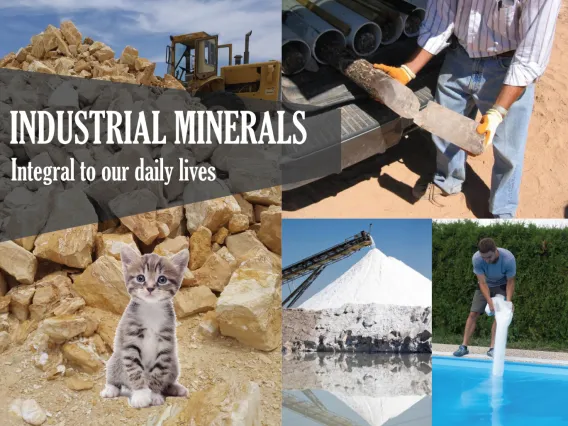
Industrial Minerals: Zeolite, gypsum, salt, perlite and clay
Clockwise from left: Zeolite from Bowie, AZ/cat, salt core from Eloy, AZ (Keenan Murray/AZGS), man using pool salt, salt mine and plant in Glendale, AZ (Michael Schennum/The Republic).
Industrial minerals are found in nearly every product we use. They make up glass, plastics, paint, and are even added to paper. Your pets even need industrial minerals – kitty litter is made of clay, zeolite or other minerals.
Arizona mines extract several key industrial minerals including zeolite, salt, gypsum, clay and perlite. Arizona zeolites were used to remove radioactive contaminants from water after the Fukushima nuclear disaster, salt from Glendale is used for water softening and gypsum mined in Arizona is used for cement and drywall manufacturing.
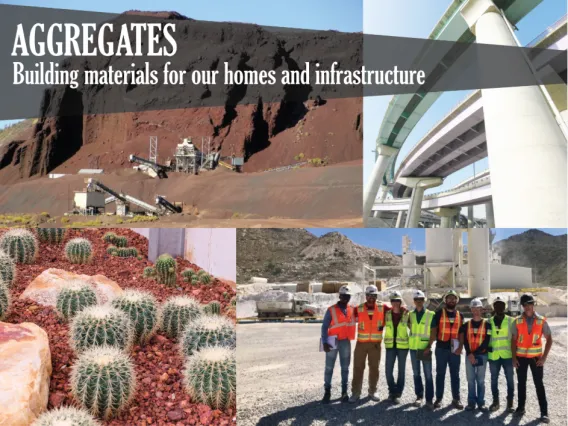
Aggregates: Stone, cement, sand and gravel
Clockwise from top left: Cinder quarry (Mike Conway/AZGS), concrete highway, Arizona marble quarry, garden stone
They may not be as famous as Arizona’s precious metal deposits, but Arizona’s construction materials – sand and gravel, cement and crushed stone – are its 2nd, 4th and 5th most valuable mineral commodities (copper - #1 and molybdenum - #3 round out the top 5). Arizona sand and gravel production was valued at nearly $400 million in 2017! That’s a lot of sand!
These materials are heavy and needed in huge quantities for any type of construction, so having access to local sources of aggregate materials allow Arizona to create the infrastructure needed to support a rapidly growing population.

